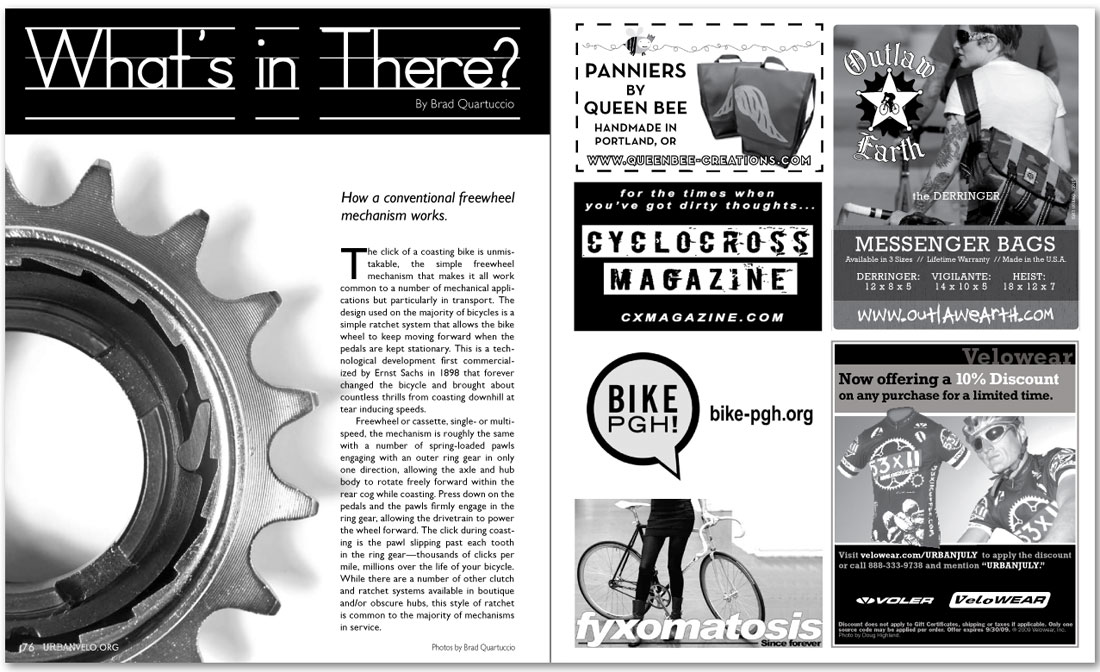|
What's In There?
How a conventional freewheel mechanism works.
By Brad Quartuccio
The click of a coasting bike is unmistakable, the simple freewheel mechanism that makes it all work common to a number of mechanical applications but particularly in transport. The design used on the majority of bicycles is a simple ratchet system that allows the bike wheel to keep moving forward when the pedals are kept stationary. This is a technological development first commercialized by Ernst Sachs in 1898 that forever changed the bicycle and brought about countless thrills from coasting downhill at tear inducing speeds.
Freewheel or cassette, single- or multispeed, the mechanism is roughly the same with a number of spring-loaded pawls engaging with an outer ring gear in only one direction, allowing the axle and hub body to rotate freely forward within the rear cog while coasting. Press down on the pedals and the pawls firmly engage in the ring gear, allowing the drivetrain to power the wheel forward. The click during coasting is the pawl slipping past each tooth in the ring gear—thousands of clicks per mile, millions over the life of your bicycle. While there are a number of other clutch and ratchet systems available in boutique and/or obscure hubs, this style of ratchet is common to the majority of mechanisms in service. |
|
|
|
|

